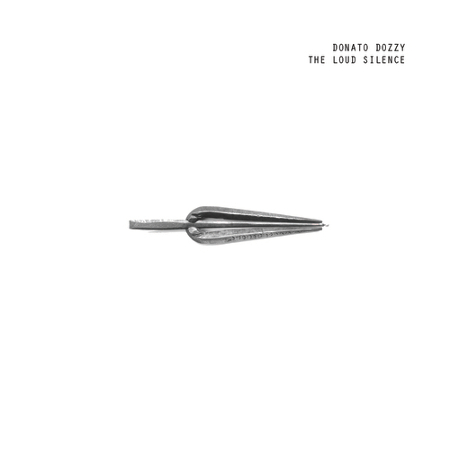The mouth harp emits what many might would call a ‘down-home’ sound. It provides a peculiar, spittle-covered backbone to a variety of rural folk musics, many of which give the harp its own local moniker. Call it the ‘jaw harp’ or the ‘Ozark harp’ for instance, and you can imagine it being played on a south Missouri porch, providing a droning background to washboard rhythms. Call it the ‘Jew’s harp’ or ‘Maultrommel’, and it may bring to mind several of the reed instruments whirring and thumping together in the Austrian countryside, where the harp serves a slightly richer harmonic purpose than it does in the United States. If you call it the ‘marranzano’, meanwhile, you’re transported to a mountainside Italian village.
Sure enough, Italian avant-techno producer Donato Dozzy picks up on these various folk resonances, noting in his artist’s statement the importance of bucolic Sicilian marranzano music to his new album, The Loud Silence. But when Dozzy hears the buzzing drone of the mouth harp, he also hears the roots — more ancient than anyone would’ve known — of his likewise-beloved rave music. Indeed, each of the tracks on The Loud Silence pointedly, yet effortlessly, foregrounds the folk-y marranzano within the otherwise calm, techno-centric sonic context that Dozzy has outlined notably on Plays Bee Mask and with his group Voices From The Lake.
‘Downhill To The Sea’, number six in the eight-part suite that makes up The Loud Silence, quickly demonstrates the album’s particular fusion. The piece kicks off with a fading-in marranzano groove; without liner notes the source of the sound could be confused with the ecstatic throb emanating from any 90s rave, as the marranzano eerily recalls Ibiza-approved synth patches. Dozzy uses this timbral similarity to, in essence, re-build a conception of techno from the ground up—to find techno’s pulse in the land, in the ‘folk’, in the human body. His delicate balance of marranzano and electronics bridges the gap between old and new, city and country, synthetic and organic, all the while drawing lines between the ecstatic, trance-inducing, rhythmic potentials of both vernacular and dance music.
The Loud Silence‘s other seven pieces similarly reinvent four-on-the-floor techno traditionalism, in each instance exploring a different style of marranzano playing. Spaced-out effort ‘The Net’ comes across like Pantha du Prince dumped in a swamp, with its sparse harp plucks and cloaked rhythmic pulse. LP closer ‘Exit The Acropolis’ channels Dozzy’s countrymen with its lurching, Italian-horror-soundtrack aesthetic. The title track, meanwhile, suggests an acoustic, homespun take on Neu! — invigorating but restrained with its use two harps, one providing a chugging rhythm and the other adding higher-pitched accents. But the piece’s second half features a slight rhythmic slip, uncharacteristic in techno or kosmische Musik, that places the accent on a new beat — a change that enlivens the composition: a minimalist take on a rave-up, perhaps, giving a hitherto mechanical song humanised abandon.
Standout opener ‘Personal Rock’ similarly humanises a pulse that, on its surface, sounds robotic. The track crucially sets the album’s organic scene. We hear field recordings of a calm outdoor setting: wind blowing, foliage rustling, eventually a fly buzzing, followed by the sound of the marranzano, echoing the insect’s buzz with a stately rhythmic drive. For the ensuing four minutes, the marranzano persists by itself, vibrating hypnotically. Its pattern, however, though repetitious, features several jilts like the one in ‘The Louder Silence’: human errors, the kinds of happy mistakes, perhaps intentional, that put a voice (or in the marranzano’s case, just a mouth) behind the music.
This is a tactic Dozzy has employed before: imbuing music that seems obtuse with an unimpeachable human spirit. Plays Bee Mask brims with Dozzy’s creative admiration for his peer, the titular Ohioan musician, Bee Mask. Voices from the Lake’s overarching concept is, essentially, friendship—that between Dozzy and co-producer Neel. Each of these projects features minimal music that, because of both its backstory and its warm tones, suggests a more inviting touch than its austere facade implies. On The Loud Silence, minimal electro seriousness likewise fades upon close listening, replaced by Dozzy’s demonstrated interest in human relations; in this case, simultaneous memories of traditional folk and contemporary club dance parties, where they intersect, their mutual affirmative aims.
<div class="fb-comments" data-href="http://thequietus.com/articles/18895-donato-dozzy-the-loud-silence-review” data-width="550">


